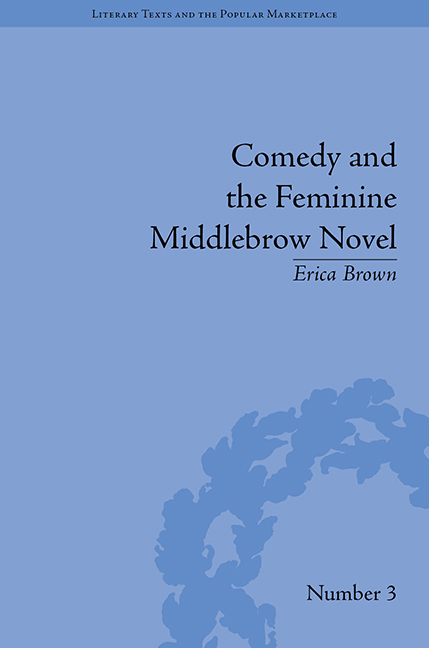Book contents
- Frontmatter
- CONTENTS
- Acknowledgements
- Introduction
- 1 The Middlebrow and Comedy: Elizabeth Taylor and Elizabeth von Arnim's Cultural and Literary Context
- 2 A Comedic ‘Response’ to War? Elizabeth von Arnim's Christopher and Columbus (1919) and Mr Skeffington (1940), and Elizabeth Taylor's At Mrs Lippincote's (1945)
- 3 ‘One Begins to See what is Meant by “They Lived Happily Ever After”’: Elizabeth von Arnim's Vera (1921) and Elizabeth Taylor's Palladian (1946)
- 4 ‘One Shudders to Think what a Less Sophisticated Artist would have Made of It’: The Comedy of Age in Elizabeth von Arnim's Love (1925) and Elizabeth Taylor's In a Summer Season (1961)
- Conclusion
- Notes
- Works Cited
- Index
Introduction
- Frontmatter
- CONTENTS
- Acknowledgements
- Introduction
- 1 The Middlebrow and Comedy: Elizabeth Taylor and Elizabeth von Arnim's Cultural and Literary Context
- 2 A Comedic ‘Response’ to War? Elizabeth von Arnim's Christopher and Columbus (1919) and Mr Skeffington (1940), and Elizabeth Taylor's At Mrs Lippincote's (1945)
- 3 ‘One Begins to See what is Meant by “They Lived Happily Ever After”’: Elizabeth von Arnim's Vera (1921) and Elizabeth Taylor's Palladian (1946)
- 4 ‘One Shudders to Think what a Less Sophisticated Artist would have Made of It’: The Comedy of Age in Elizabeth von Arnim's Love (1925) and Elizabeth Taylor's In a Summer Season (1961)
- Conclusion
- Notes
- Works Cited
- Index
Summary
Like all of her books, ‘Mr Skeffington’ is delightful entertainment.
A new novel by Elizabeth Taylor is always a delight.
The few critical articles about Elizabeth von Arnim (1866–1941) and Elizabeth Taylor (1912–75), both during their careers and in recent years, wonder at their ‘inexplicable lack of renown’. As early as 1957, Kingsley Amis used the opportunity of a review of Angel (1957) to ask why, despite good reviews and considerable readership, ‘in surveys of the modern novel, whether printed or oral, [Taylor] never seems to find a place’. Amis finds an explanation in that her work ‘bears a superficial resemblance to the “library novel” or “women's novel” frequently vilified (though rarely read) in literary circles’. The resemblance is in the domestic subject, ‘true to life as it is lived by large numbers of people’, which he argues ‘is as valid as any other, and more valid than many, for exploration by the serious novelist’. Von Arnim's novels are similarly focused on a female, domestic world, and as Jennifer Shepherd notes, on one level the omission of von Arnim from literary history is not all that surprising: ‘to some degree her exclusion reflects the “same old story” of gender politics at the heart of literary historiography’. This feminine domestic focus and the use of a predominantly realist form are compounded by a characteristic that is arguably even more fatal to a literary reputation: these novels are ‘delightful entertainment’.
- Type
- Chapter
- Information
- Comedy and the Feminine Middlebrow NovelElizabeth von Arnim and Elizabeth Taylor, pp. 1 - 4Publisher: Pickering & ChattoFirst published in: 2014



